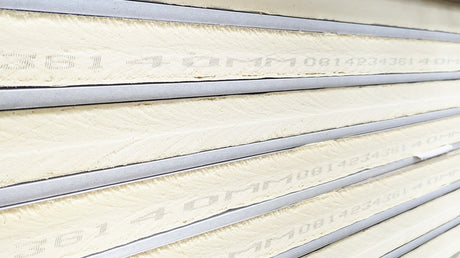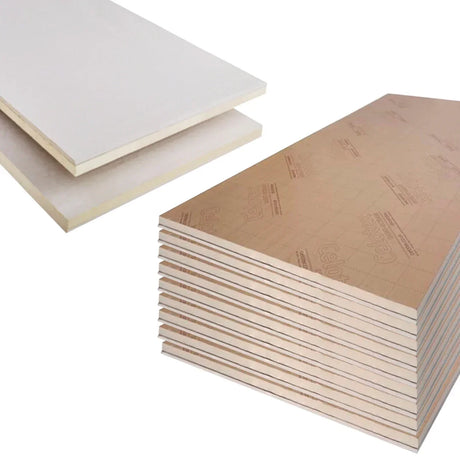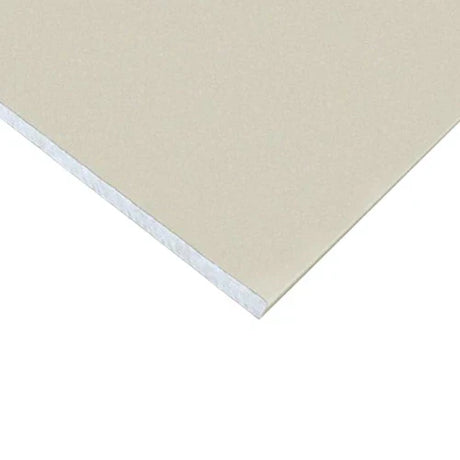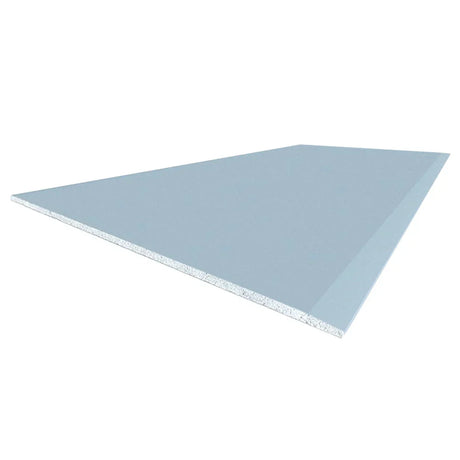There's something deeply satisfying about creating outdoor furniture that stands the test of time. When I first considered building a garden bench, I assumed any exterior-grade timber would suffice. That assumption nearly cost me weeks of work when I discovered the crucial differences between standard plywood and its weather-resistant cousin. If you're planning an outdoor furniture project, understanding these distinctions could save you considerable frustration and expense.
Why Marine Plywood Makes the Difference
Picture this: you've spent an entire weekend crafting a beautiful garden bench, only to watch it deteriorate within months due to moisture damage. This common scenario highlights why material selection matters tremendously for outdoor projects. Marine plywood represents a specialised engineered wood product designed specifically to withstand the demanding conditions our British weather throws at outdoor structures.
Unlike standard plywood found in most builders' merchants, this premium material undergoes rigorous manufacturing processes that make it exceptionally resistant to moisture, delimitation, and fungal attack. British manufacturers such as Robbins Timber and James Latham produce high-quality specifications that comply with BS 1088 standards, ensuring consistent performance in challenging outdoor environments.
The construction process involves bonding multiple thin veneers using waterproof phenolic resin adhesives rather than the standard urea-formaldehyde glues found in interior grades. This fundamental difference means your outdoor furniture maintains its structural integrity even when exposed to persistent rain, morning dew, and the temperature fluctuations characteristic of UK climates.
Understanding Your Material Options
Grades and Standards
When starting my own outdoor furniture project, I found the technical specifications somewhat bewildering. However, understanding these details proved invaluable for making informed purchasing decisions. BS 1088 represents the highest standard, guaranteeing face veneers free from defects and cores constructed without gaps or voids.
British suppliers like Covers Timber & Builders Merchants stock various grades suitable for different applications and budgets. Whilst BS 1088 marine plywood commands premium pricing, the long-term performance justifies the investment for permanent outdoor installations. Alternative specifications such as WBP (Weather and Boil Proof) rated material can suit projects with moderate exposure requirements.
Choosing the Right Thickness
The material typically comes in thicknesses ranging from 4mm to 25mm, with 12mm to 18mm proving ideal for most bench construction projects. Thicker panels provide greater structural strength for seat surfaces and main supports, whilst thinner material works well for decorative elements or backrest panels.
Essential Tools and Materials
Your Basic Toolkit
Successful bench construction requires proper preparation and appropriate equipment. From my experience, having the right tools readily available prevents frustrating interruptions and ensures cleaner, more professional results. Your basic toolkit should include a circular saw or jigsaw for cutting panels, a random orbital sander for finishing surfaces, and a reliable cordless drill for assembly work.
Fixings and Adhesives
Beyond the primary timber panels, you'll need stainless steel or galvanised fixings throughout your construction. Standard steel screws will rust rapidly in outdoor conditions, compromising both appearance and structural integrity. UK manufacturers like Rapierstar produce comprehensive ranges of corrosion-resistant fasteners specifically designed for external applications.
Quality wood adhesive forms another critical component of durable construction. Cascamite powdered resin glue, available from most reputable building supplies merchants, provides waterproof bonding that won't fail in damp conditions.
Finishing Products
For finishing work, you'll want exterior-grade wood treatment products and protective coatings. Manufacturers such as Ronseal and Sadolin produce comprehensive ranges of wood preservatives, oils, and paints formulated specifically for UK weather conditions. Selecting appropriate finishes dramatically extends the service life of your outdoor furniture whilst enhancing its appearance.
Designing Your Bench
Getting the Dimensions Right
Before cutting any timber, spend time developing a detailed design that addresses both aesthetic preferences and practical requirements. Standard bench seats typically measure 450-500mm from ground to seating surface, providing comfortable seating for most adults. The seat depth generally ranges from 400-450mm, offering adequate support without feeling cramped.
Back support angles deserve particular attention during design development. A backrest inclination of 15-20 degrees from vertical provides comfortable support for extended sitting periods. Position the back support approximately 350-400mm above the seat surface, ensuring adequate lumbar support.
Structural Considerations
Your design must account for anticipated loads, typically calculated at 150kg per seating position for domestic furniture. This requirement influences decisions about panel thickness, support positioning, and joint construction methods. Marine plywood excels in these applications due to its consistent structural properties and resistance to deformation under load.
Weather exposure patterns should inform your design choices as well. Features like slight slopes on horizontal surfaces encourage water drainage rather than pooling, whilst rounded edges shed moisture more effectively than sharp corners.
The Construction Process
Cutting and Preparation
With your design finalised and materials assembled, construction can commence. Begin by accurately marking and cutting all components according to your plans. Take time to ensure cuts are square and dimensions precise; errors at this stage multiply throughout the assembly process.
Once components are cut, thorough sanding proves essential before assembly. Start with 80-grit abrasive to remove rough edges and surface imperfections, progressing through 120-grit and finishing with 180-grit for smooth surfaces. Pay particular attention to edges and end grain.
Assembly Techniques
Assembly begins with constructing the primary frame structure. Apply wood adhesive to mating surfaces before inserting screws, as this combination provides significantly stronger joints than mechanical fixings alone. Pre-drill all screw holes to prevent splitting, particularly near panel edges where material thickness is limited.
The structural frame supports the entire bench, so ensure all joints are square and adequately reinforced. Cross-bracing between legs prevents racking forces from compromising stability, whilst properly positioned supports distribute loads evenly across seating surfaces.
Finishing for Weather Protection
Initial Treatment
Proper finishing represents the difference between outdoor furniture that lasts years versus months. Even marine plywood requires protective coatings to maintain its appearance and maximise service life. Begin with a comprehensive application of wood preservative to all surfaces, paying particular attention to end grain and cut edges where moisture penetration occurs most readily.
Applying Your Final Finish
After preservative treatment has dried completely, apply your chosen finish system. Oil-based products like Treatex or Osmo penetrate timber surfaces, providing protection whilst allowing the natural grain to remain visible. These finishes require reapplication every 12-18 months but offer straightforward maintenance and attractive natural appearances.
Alternatively, exterior paint systems from manufacturers like Dulux and Crown offer excellent weather resistance. Apply primer coats to bare timber before building up coverage with topcoat applications, ensuring all surfaces receive adequate protection.
Maintenance and Long-Term Care
Creating durable outdoor furniture requires ongoing maintenance to preserve its condition and appearance. Establish a regular inspection routine, checking for signs of moisture damage, finish deterioration, or loose fixings. Addressing minor issues promptly prevents them from developing into significant problems.
Annual cleaning removes accumulated dirt and organic matter that can trap moisture against timber surfaces. Use a soft brush and mild detergent solution rather than high-pressure washers. Allow surfaces to dry thoroughly before applying maintenance treatments.
Reapplication of protective coatings maintains weather resistance over time. Oil-based finishes typically require annual renewal, whilst paint systems may last several years before requiring attention.
Your Path to Success
Building weather-resistant garden furniture represents a rewarding project that combines practical skills with creative design. Selecting appropriate materials like marine plywood ensures your efforts result in furniture that withstands British weather conditions whilst maintaining its appearance and functionality for years to come.
At DIY Building Supplies, we understand the importance of starting every project with quality materials and expert guidance. Our team brings together extensive practical experience and technical knowledge to support your outdoor furniture projects from initial planning through to completion. We stock premium materials from trusted British manufacturers, ensuring you have access to specifications that meet demanding outdoor applications.
Whether you're an experienced woodworker or tackling your first outdoor furniture project, we're here to provide the materials, advice, and support you need for success. Contact our team to discuss your specific requirements and discover how quality materials combined with proper techniques create outdoor furniture that truly stands the test of time.









